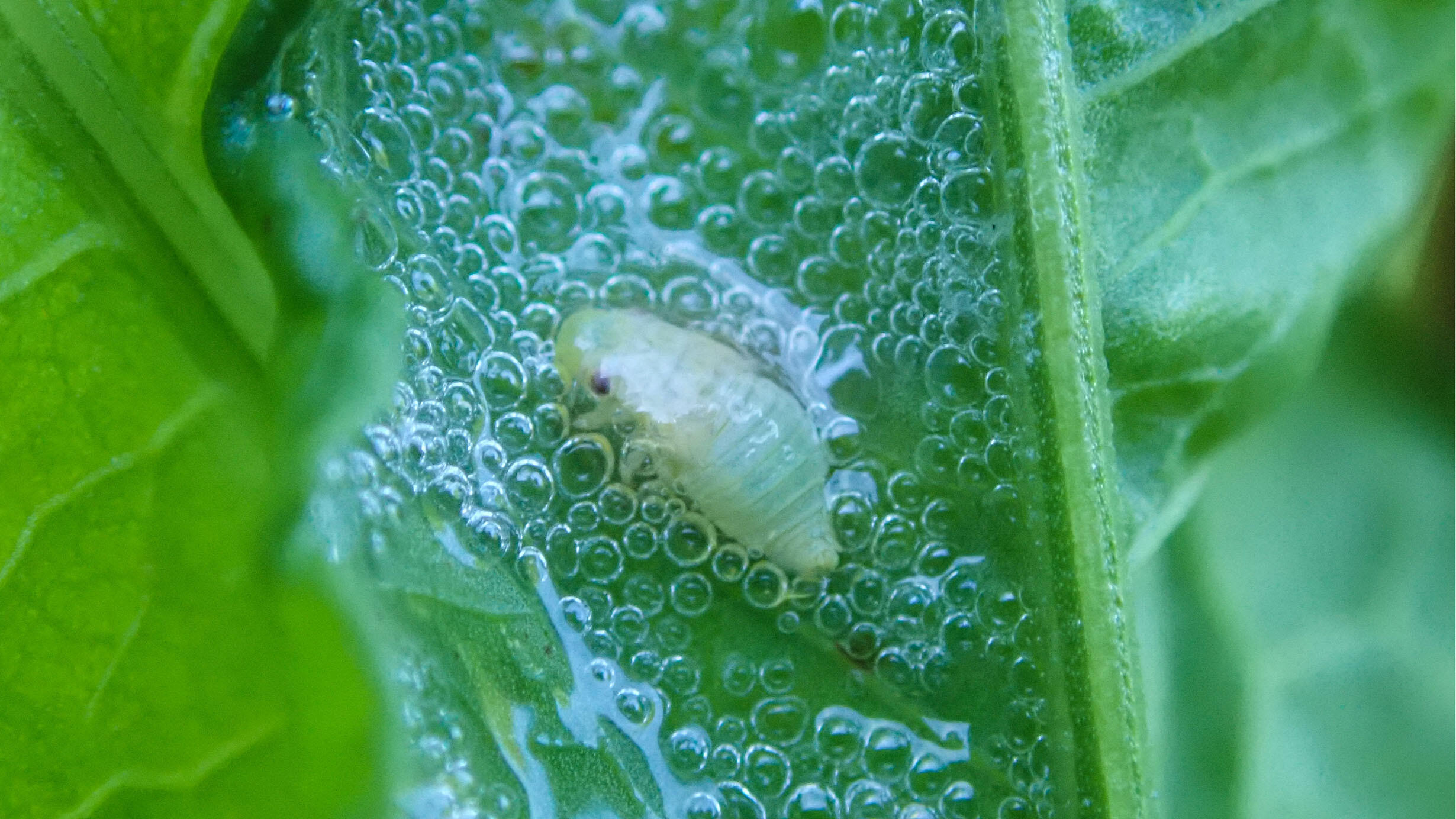Meadow Spittlebug’s Record-breaking Diet Also Makes it Top Disease Carrier for Plants
 A nymph meadow spittlebug (Philaenus spumarius) surrounded by spittle mass.
A nymph meadow spittlebug (Philaenus spumarius) surrounded by spittle mass.© Claire Harkin
New research fueled in part by citizen scientists reveals that the meadow spittlebug—known for the foamy, spit-like urine released by its nymphs—can feed on at least 1,300 species of host plants, more than twice the number of any other insect.
The study, which is published today in the journal PLOS ONE, could be especially important in the effort to stop the bug from spreading a type of bacterium that has caused the death of crops across the world, including olive trees in Italy, grapevines in California, citrus trees in South America, and almond trees in Spain.
“Thirteen hundred host plants means 1,300 opportunities to spread pathogenic bacteria in natural and agricultural environments, a sobering wake-up call,” said the study’s lead author Vinton Thompson, a research associate in the Museum’s Division of Invertebrate Zoology.
Meadow spittlebugs (Philaenus spumarius), also called froghoppers, suck sap from plants with straw-like mouthparts, picking up bacteria along the way and becoming vectors for plant diseases. Most recently, the bugs have been found to spread the bacterium Xylella fastidiosa, a pathogen that has decimated olive groves in the Apulia region of Italy. To predict what other plant species and ecosystems are at risk, scientists must understand the vector’s host range. Thompson, who has been studying and documenting host plants of spittlebugs for 50 years, set out to do that along with collaborators in the United Kingdom.
The scientists combined data from published literature, host records associated with museum specimens, observations, and data from a citizen science effort carried out in Britain called BRIGIT, which ran from 2019-2021 to help prepare for the possible introduction of X. fastidiosa to the UK.
Meadow spittlebugs have a wide geographical range and can thrive in drastically different climates, from Hawaii to just south of the Arctic Circle. Scientists have suspected for some time that this bug had more hosts than any other insect, but the number they calculated was startling: the meadow spittlebug feeds on more than 1,300 species of plants across 117 families—a world record for insects. These plant species include ferns, herbs, shrubs, vines and trees, annuals and perennials, grasses and forbs, plants of the tropics, subtropics, temperate and boreal zones, and conifers. The researchers found that the insect with the second-highest number of plant hosts is the fall webworm, a moth that is known to feed on 636 different plant species.
“The spittlebug is the ultimate herbivore champion,” said study author Claire Harkin, from the University of Sussex. “It will feed on just about every imaginable kind of vascular plant except those submerged in aquatic environments.”
Why do meadow spittlebugs have so many more host plants? More research is needed, but the scientists suspect it’s due to the bugs’ preference for sap from the xylem, which is the main water-carrying structure of the plant. Most sap-eating bugs feed from the plant’s phloem, which is the tissue that transmits sugar and other metabolic compounds. Unlike sap from the phloem, the liquid in the xylem is similar across a diverse range of host plants.
“These bugs feed on almost anything they can get at with their mouth parts,” Thompson said. “Unfortunately, that means there is tremendous potential for the spread of X. fastidiosa in natural ecosystems if it’s introduced. This review is just the first step in thinking about how to control this bug and the diseases it spreads.”
The meadow spittlebug is no stranger to superlatives: it is the highest jumping insect proportional to body size and has the largest measured sucking power of any bug—strong enough that it could suck the water out of a cup at the base of the Statue of Liberty while perched on its crown. It also is exceptional at urination, excreting the human equivalent of 2,500 gallons of urine a day.